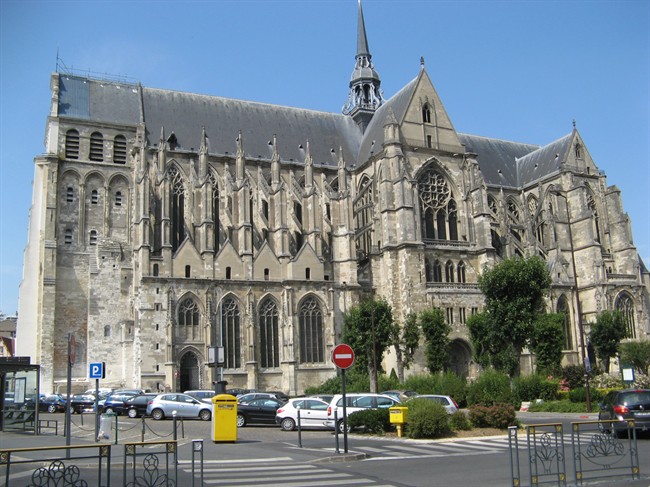YPRES, Belgium – The First World War cut a swath of destruction across Europe, leaving centuries-old towns and hallowed buildings in ruins. Rebuilding took generations.

Many Canadians visiting this West Flanders city where so many of their forebears fought and died in that war marvel at the magnificent Cloth Hall in the Grand Market Square.
A lot of them don’t know, however, that this splendid example of 13th century architecture is not even as old the Centre Block of Ottawa’s Parliament Buildings.
Oddly, both the Cloth Hall and the original Centre Block of Parliament buildings burned and crashed to Earth within a couple of years of one another.
On the night of Feb. 3, 1916 a raging fire destroyed all but the Library of Parliament and the northwest wing of the Centre Block.
READ MORE: ‘Wait for Me, Daddy’ photo has dual meaning: Bernard
On Nov. 22, 1914, German shell fire struck the Cloth Hall. Wooden scaffolding set up to repair damage caused by earlier shelling quickly ignited and the upper floors of the hall were badly charred.
The Germans rained fire on Ypres for the rest of the war but never managed to seize it. Canadian soldiers, who saw their first major action of the war at the Second Battle of Ypres in April 1915, watched the gradual destruction of this former textile centre.
By the end of the war, in November 1918, the venerable city and its medieval buildings had been flattened.
Ottawa’s Centre Block was rebuilt in fairly short order. On September 1, 1919, the Prince of Wales, the future King Edward VIII, laid the cornerstone for the Peace Tower. The structure was completed in 1922.

Get daily National news
The rebuilding of the Cloth Hall finally finished in 1967. And if Winston Churchill had had his way, Ypres would have been left as a pile of rubble as a monument to the hundreds of thousands of Allied troops killed there through the years of fighting.
READ MORE: D-Day 70th Anniversary: The first building liberated in Normandy
“I should like us to acquire the whole of the ruins of Ypres,” Great Britain’s future prime minister said in 1919. “A more sacred place for the British race does not exist in the world.”
But two factions of Ypres citizenry lobbied for reconstruction. One group wanted a new city built on the ruins using the fashionable art deco architecture of the 1920s.
Another group, which prevailed, favoured using the existing plans for the old city to create a replica of pre-war Ypres, paid for by German reparation payments and donations pouring in from all over the world.
Some French and Belgian communities, pounded flat by years of shelling, were never rebuilt, passing into history with no more than an inscribed cairn to mark their previous existence.
One of many badly damaged communities on the Western Front that actually was reborn in art deco style was Saint Quentin in the Picardy region of northern France near the Somme River.
It was the site of brutal fighting and a long German occupation which left three-quarters of the city in ruins.
Once again, war’s end brought an influx of German reparation payments as well as worldwide donations, and the townspeople decided to rebuild.
The reconstruction included colourful mosaics, floral friezes and wrought iron or bow windows that reflect the art deco motif and became a powerful tourist attraction that is still a major part of the city’s marketing campaign.
READ MORE: The perilous history of Canada’s Ross rifle
Frederic Buron, Saint Quentin’s manager of tourism development, said the city centre sustained the most damage, especially the Basilica, where the Germans used the church steeple as an observation post for artillery.
“The Basilica’s wooden framework, dating back to the 17th century, caught fire on Aug. 15, 1917 when Allied shelling targeted the steeple,” Buron said.
“The roof was destroyed and without its protection during the particularly harsh winter that followed, the interior of the building collapsed in on itself.
“Many stained glass windows were blown and the crypt housing the tomb of Saint Quintinus, the Roman martyr who gave his name to the city, burst open. A new crypt was constructed during the restoration and the sarcophagus containing the saint’s remains was transferred there.”
Buron added that the majority of the 55,000 inhabitants had fled either immediately after the German takeover in 1914 or during a massive evacuation in March 1917, when the Germans turned Saint Quentin into a fortress town as part of their defensive Hindenburg Line.
“At war’s end, the townspeople returned to find the city in ruins,” he said. “Temporary shelters were set up and the enormous task of rebuilding the city began.”
The reconstruction began with the transportation system, roads, canals and railways. The locals struggled to re-establish the industrial base that had been methodically dismantled and shipped off to Germany. It took until the late 1930s to get things back to pre-war conditions.
The pipes of the massive organ in the Basilica had been removed by the Germans and melted down to make weapons and ammunition. The pipes and the shattered stained glass windows were replaced in the rebuilding.
The process taught the locals a valuable lesson, Buron said.
“When the Second World War broke out in September 1939, we had to reverse the process and store away all our valuable artifacts to prevent them from being destroyed all over again.”





Comments